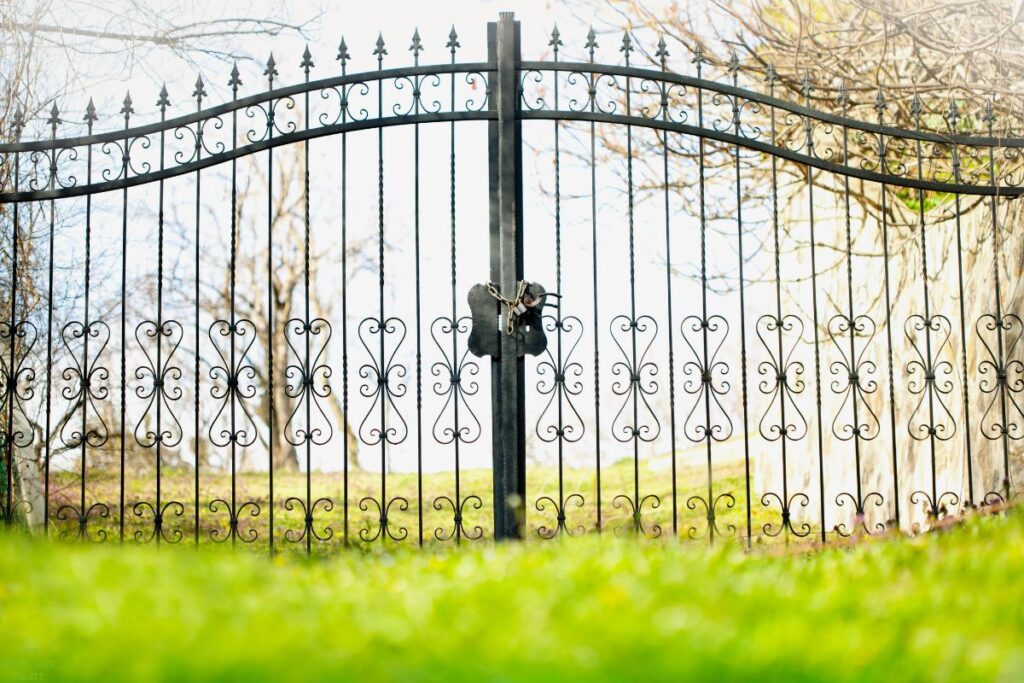Inside: Use these five tips for creating healthy boundaries in your life to achieve a better balance.
When we think about taking care of our health and well-being, a few things come to mind pretty quickly: a healthy diet, staying hydrated, getting exercise, and yearly doctor’s appointments.
One thing that doesn’t often come to mind – but has a huge impact?
Boundaries.
Creating healthy boundaries for yourself – and sticking to them – is critical to preserving your mental and physical well-being. Healthy boundaries keep us from stretching ourselves too thin, keep us out of unhealthy situations, and prevent resentment from creeping into our lives.
But finding ways to create healthy boundaries is often easier said than done. And creating and maintaining those boundaries isn’t something that happens overnight.
It requires a lot of willpower to say “no” and maintain your resolve. And it’s a skill that you build up over time.
The sooner you work on creating healthy boundaries for yourself and stick to them, the better off you’ll be. Not sure how to make it happen?
I’ve got you covered. Keep reading to understand why creating healthy boundaries is important and learn five helpful tips for implementing them.

Why Creating Healthy Boundaries is Important
Many of us can benefit from healthy boundaries in many areas of our lives. Work, relationships, technology, and even hobbies and personal interests can push us to our limits and negatively impact our well-being without the right boundaries in place.
But with healthy boundaries, we can improve our lives and overall well-being.
Boundaries for different parts of our lives can vary. Sometimes what’s needed is a low fence. Other times the boundary includes a gate that can be open or shut. And in other situations, the boundary that is needed looks more like a solid rock wall.
Boundaries can be physical or emotional. The purpose of boundaries is to protect yourself from people, influences, or other things that negatively impact your life.
Boundaries can help clarify what is most important to us. They can also help improve relationships by creating clear expectations and responsibilities.
Setting healthy boundaries in various aspects of our lives can help us find better balance and lead a healthier and happier life.
5 Tips for Creating Healthy Boundaries in Your Life
If you’re ready to set some healthy boundaries for yourself, here are a few tips to keep in mind as you navigate the process:

1. Get clear on your needs and wants.
You can’t set and maintain clear boundaries if you don’t understand what those boundaries should help you achieve. That’s why the first step to setting healthy boundaries involves thinking about what you want and need.
What people, things, or activities are causing you stress? What do you need to do more of – and what do you need to do less of? How do you want to spend your time? What behaviors are helping you work toward your goals? Which habits are keeping you from your goals?
How do you feel at the end of the day – and how would you like to feel?
Get out a pen and paper (or your notes app on your phone) and document where you’re at now and where you’d like to be in the future. This will go a long way in helping you identify what’s working well, what isn’t, and what you can change to move yourself in a positive direction.
And from there, you can articulate where you need to create healthy boundaries. Think of boundaries as specific rules and guidelines that you choose to help you reach your goals and create more balance in your life.
Setting healthy boundaries requires self-awareness. It’s important to be clear with expectations and use assertiveness and clear communication to express your needs.

2. Prioritize your time.
Regardless of where you need to create boundaries in your life, chances are time is a factor that’s impacting your well-being – and a big opportunity to improve your life.
Very few people have full control over how they spend their time. Many of us have to work, after all – and commit to a certain schedule due to that.
Those of us with kids or family who are dependent on us have even less flexibility with our time as we navigate those commitments.
But even the busiest person has some say in how they spend their days – and that’s what you need to take control of. Creating healthy boundaries to prioritize the free time you do have can make a huge difference.
Think about how you spend your free time. Do you spend it pursuing hobbies you love, or relaxing in ways that make you feel recharged?
Or do you spend that time doing things that others expect of you, with people who don’t fill your cup, or exhausting yourself with an overloaded schedule?
If that resonates with you, chances are good you’re a people pleaser. When saying yes becomes a habit it can lead to burnout and resentment.
Take the opportunity to review and declutter your schedule as needed. Then implement boundaries around any future commitments or obligations.
Remember that self-care habits are important too and that how you take care of yourself directly impacts those you love.

3. Practice saying “no.”
Once you know what you need to offload from your life – activities, commitments, relationships – it’s time to distance yourself from those things.
And that can be hard. After all, if saying “no” was easy, you wouldn’t be in this position in the first place, right?
But saying “no” is the key to reclaiming your time and restoring your energy and joy. It might feel uncomfortable at first but it’s the key to setting healthy boundaries.
The best way to get comfortable saying “no” is to practice. You can create scenarios where you might want to opt-out and practice what you’d say – out loud in front of a mirror, or on paper if you’d prefer to visualize the conversation.
Then, find little things that you can say “no” to. Small wins will add up over time and increase your comfort level in setting boundaries.
Learning to say no is a key habit for preventing overwhelm and creating healthy boundaries in your life.
Keep in mind that saying no isn’t always directed to another person. Boundaries are also rules that you give yourself to help you make better choices.
Opting not to shop for fun is a boundary. Sticking to a budget or spending plan is a boundary. Choosing what you will and won’t share online is a boundary. You’ll be tempted to cross your own boundaries at times, but remember why you set them and stand your ground.

4. Assess the health of the relationships in your life.
When we think of boundaries often the first thought is the relationships we have in our lives. It’s important to remember that relationships take work and that setting boundaries is an essential habit for building strong relationships.
There are a variety of types of boundaries that can help improve your relationships.
Creating a boundary that you will listen without giving advice unless you’re asked for it can help foster better communication. Setting boundaries around certain topics to avoid can be helpful in certain relationships as well.
In other situations, more intense boundaries may be needed where you limit the access certain people have to you. In some cases, it may become necessary to declutter certain relationships in order to protect your physical or mental health.
Determining what healthy boundaries look like in your relationships can be difficult and complex. Talking with a therapist or trusted friend or mentor can be helpful.
As you communicate your boundaries it’s important to stick to your core needs while also respecting the other person’s boundaries too. Be as clear as possible and consistently uphold your boundaries to avoid confusion and sending mixed messages.

5. Stick to your commitments.
This final tip is a critical one.
Once you define a healthy boundary, you’ve got to stick to it. Otherwise, you’ll find yourself right back where you started.
One area where many of us struggle to maintain healthy boundaries, even after we’ve created them, is in our relationship with technology.
Social media has a certain way of sucking us in and capturing our attention. With endless entertainment at our fingertips, it can easily create a habit of relentless scrolling.
Our phones are designed to be addicting so sticking with the boundaries we create isn’t always easy to follow through on.
The trick to sticking to your commitments? Make it easy for yourself and remove the temptation to fall back into old habits.
In the case of technology, delete those social media apps from your phone, or leverage settings that let you limit the amount of time you spend on them.
Find yourself tempted to reconnect with someone that you know is truly toxic in your life? Delete their number.
Do you often end up working late even though you don’t really need to? Physically distance yourself from your work by locking it away – put your laptop in a drawer, or better yet, leave it at the office.
Consider what things you can proactively do to enforce your boundaries and make it easier to stand your ground.
Creating healthy boundaries in your life – and sticking to them – will make a world of difference on your well-being and help you reach your goals.

What’s your favorite tip for creating healthy boundaries in your life? Leave a comment and let me know!
Sign up on the form below to get weekly decluttering and simplifying inspiration sent straight to your inbox. You’ll also get the free 8 Quick Wins for Decluttering Worksheet to help you start to simplify your life today.
window.fd(‘form’, {
formId: ‘5e276994047cf50028d8f59f’,
containerEl: document.querySelector(‘#fd-form-5e276994047cf50028d8f59f’)
});
The post 5 Tips for Creating Healthy Boundaries in Your Life, According to Psychology appeared first on The Simplicity Habit.

